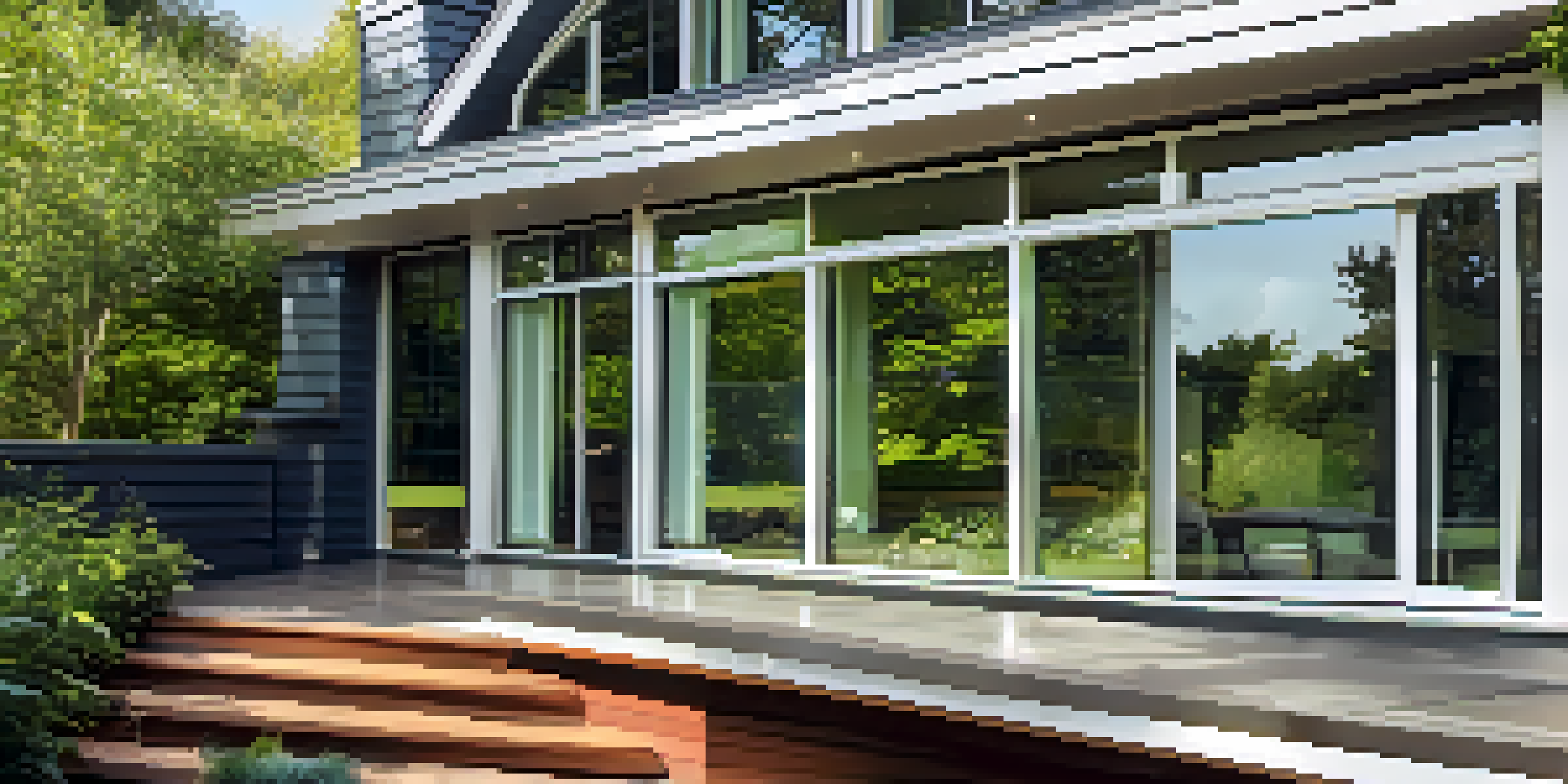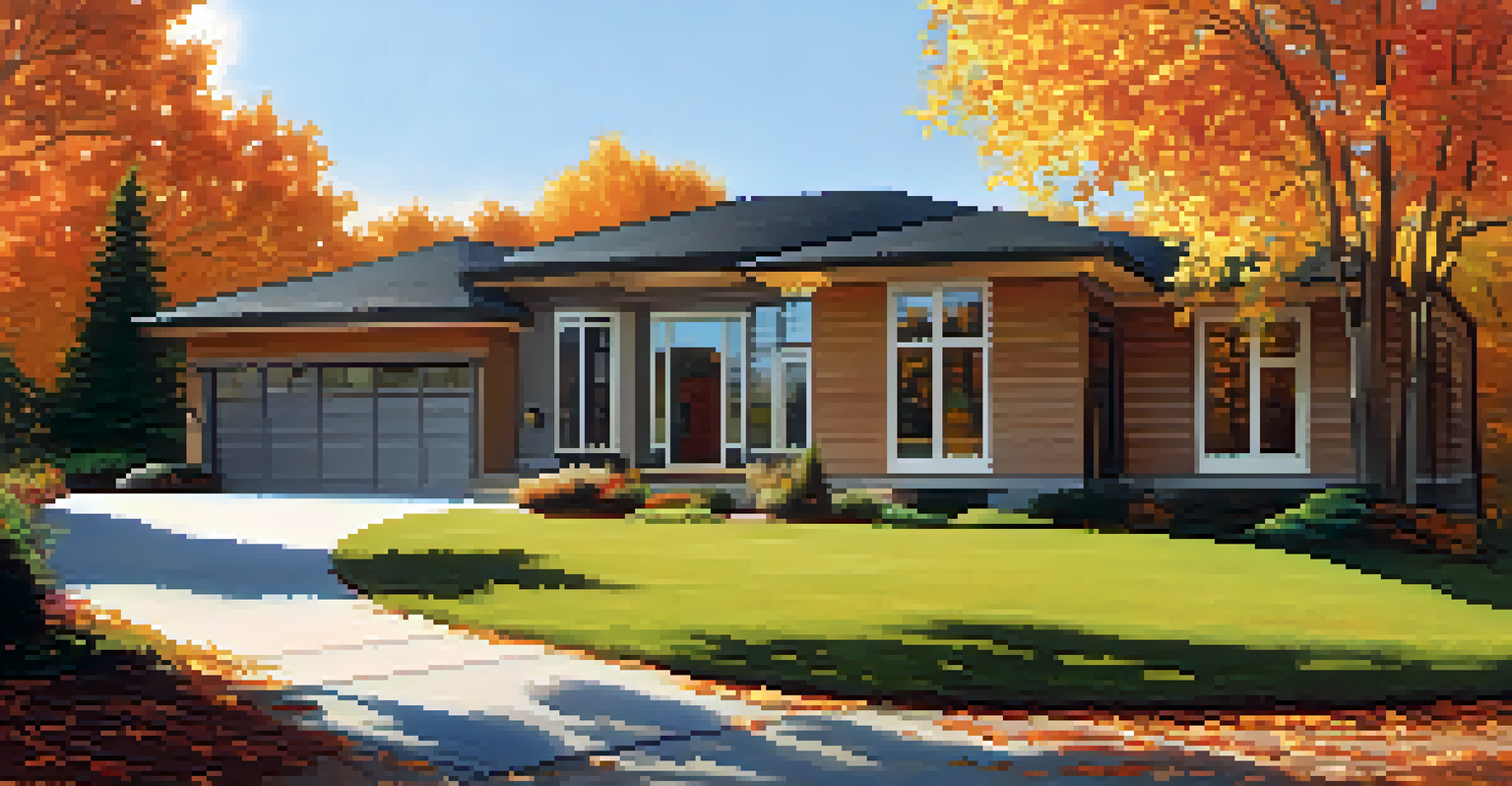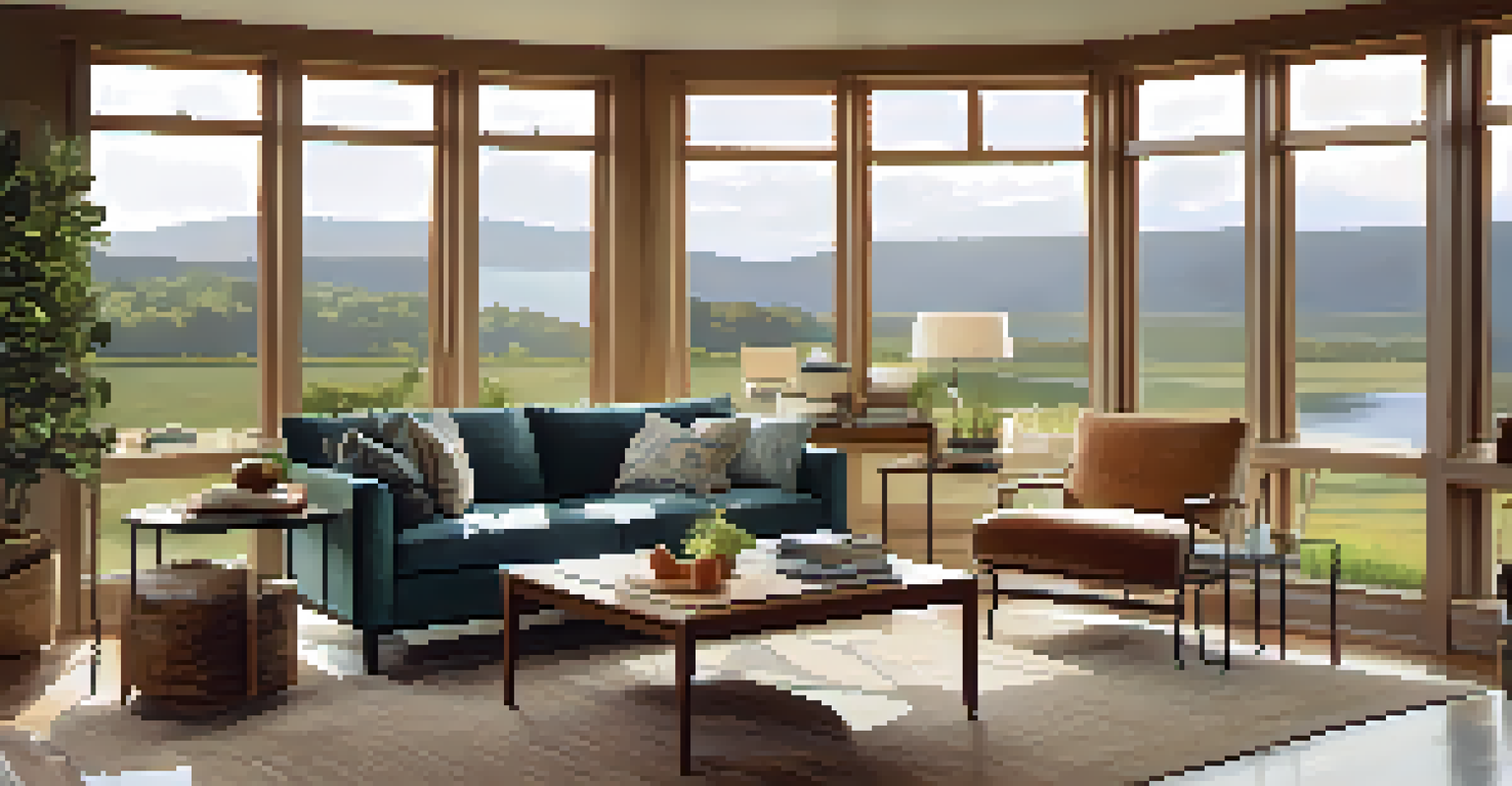How to Choose Energy-Efficient Windows for Your Home

Understanding the Importance of Energy-Efficient Windows
Energy-efficient windows play a crucial role in maintaining your home's comfort and reducing energy bills. They help regulate indoor temperatures, keeping your home warm in winter and cool in summer. By minimizing heat loss or gain, these windows contribute significantly to your home's overall energy efficiency.
Energy efficiency is not just about saving money; it’s about creating a better living environment for ourselves and future generations.
Moreover, investing in energy-efficient windows can enhance your home's resale value. Buyers today are increasingly looking for homes that offer energy savings, which means your investment can pay off when it's time to sell. It’s a win-win situation for both your wallet and the environment.
In essence, choosing the right windows goes beyond aesthetics; it’s about creating a sustainable living space. With the right choice, you can enjoy a cozy home while also reducing your carbon footprint, making a positive impact on the planet.
Identifying Energy-Efficient Window Features
When looking for energy-efficient windows, it's essential to understand the key features that contribute to their efficiency. Look for double or triple-pane glass, which provides better insulation than single-pane options. The air or gas (like argon) between the panes acts as a barrier, reducing heat transfer.

Another important aspect is the frame material. Vinyl, fiberglass, and wood are popular choices, with vinyl typically offering the best thermal performance. Each material has its pros and cons, so consider factors like durability, maintenance, and cost when making your decision.
Energy-Efficient Windows Save Money
Investing in energy-efficient windows can significantly reduce energy bills and enhance your home's resale value.
Additionally, pay attention to the window's low-emissivity (low-E) coatings. These special coatings reflect infrared light, keeping heat inside during winter and outside during summer. This feature not only improves energy efficiency but also helps in reducing glare and UV damage to your interiors.
Understanding Energy Ratings and Labels
Navigating energy ratings can be overwhelming, but they are vital for making informed decisions. Look for the ENERGY STAR label, which indicates that the window meets strict energy efficiency guidelines set by the U.S. Environmental Protection Agency. This label ensures you're investing in a product that delivers on its promises.
The best way to predict the future is to create it, and energy-efficient windows are a step towards a sustainable future.
Another essential rating to consider is the U-factor, which measures the rate of heat transfer through the window. A lower U-factor means better insulation and energy efficiency. Similarly, the Solar Heat Gain Coefficient (SHGC) measures how much solar radiation is admitted through the window; lower values are typically better in warm climates.
Lastly, the Visible Transmittance (VT) rating indicates how much light passes through the window. Choosing the right balance of VT and SHGC based on your climate can maximize natural light while minimizing heat gain, creating a comfortable indoor environment.
Assessing Your Climate Needs for Window Selection
Understanding your local climate is crucial when selecting energy-efficient windows. For example, if you live in a colder region, prioritize windows with low U-factors to retain heat. Conversely, warmer climates benefit from windows that minimize solar heat gain while allowing ample natural light.
Consider seasonal changes in your area as well. In regions with hot summers and cold winters, windows that can adapt to both extremes are ideal. Using a combination of different window types can also enhance energy efficiency throughout the year.
Key Features for Efficiency
Look for double or triple-pane glass, low-E coatings, and suitable frame materials to maximize window energy efficiency.
Ultimately, tailoring your window choices to your climate will result in better comfort levels and lower energy costs. A well-informed decision can make a significant difference in your home’s energy performance.
Choosing the Right Window Styles for Efficiency
Window style not only affects the aesthetic appeal of your home but also impacts energy efficiency. Casement windows, for instance, provide excellent sealing and are typically more energy-efficient than sliding windows. Their design allows for optimal ventilation while minimizing air leaks.
On the other hand, fixed windows can offer fantastic energy performance since they don’t open, meaning there are no gaps for air to escape. Combining fixed and operable windows can create a balance between ventilation and energy efficiency.
Ultimately, selecting the right window style involves considering your home's architecture, ventilation needs, and energy efficiency goals. A thoughtful approach can enhance both comfort and savings.
Budgeting for Energy-Efficient Windows
While energy-efficient windows may come with a higher upfront cost, they can lead to substantial savings over time. It's essential to consider the long-term benefits, including reduced utility bills and increased home value. Take a moment to calculate potential energy savings based on your current window types.
When budgeting, don't forget to factor in installation costs. Proper installation is critical to ensure your windows perform as intended. Poor installation can lead to air leaks, negating the benefits of energy-efficient windows.
Proper Installation is Crucial
Selecting a qualified contractor for window installation ensures optimal performance and longevity of your energy-efficient windows.
Additionally, look for available rebates or incentives from local utility companies or government programs. Many regions offer financial assistance for energy-efficient upgrades, making your investment more affordable.
Finding the Right Professionals for Installation
Choosing the right contractor for window installation is just as important as selecting the windows themselves. Look for certified professionals with experience in installing energy-efficient windows. Reading reviews and asking for recommendations can help you find reputable contractors in your area.
It's also wise to obtain multiple quotes before making a decision. This will give you a better understanding of the market and help you gauge the quality of materials and workmanship offered. Don't hesitate to ask questions about their installation process and warranty policies.

A skilled installer will ensure your windows are fitted correctly, maximizing their efficiency and lifespan. Investing time in selecting the right professional can save you money and headaches down the line.